2019 Aston Martin Vantage first drive: The Porsche hunter
In the long-running battle between Porsche and Aston Martin, the familiar – and legendary – 911 is getting a very different challenger. The all-new 2019 Aston Martin Vantage is the automaker's new weapon, starting with a clean sheet design from the ground up, inside and out. Its goal is simple: be the most badass, Ferrari, Porsche and Bentley-hunting machine you could hope for.
Part of Aston Martin's "Second Century Plan" that includes replacing all the current sports cars in the automaker's stable by 2019, it'll eventually mean an all-new trio of DB11, Vantage, and finally Vanquish models. Andy Palmer, Aston Martin's CEO, is refreshingly open about just how important a role the new Vantage plays in the continued growth of Aston Martin. Doubly so, in fact, given how the company has struggled over the past decade and a half.
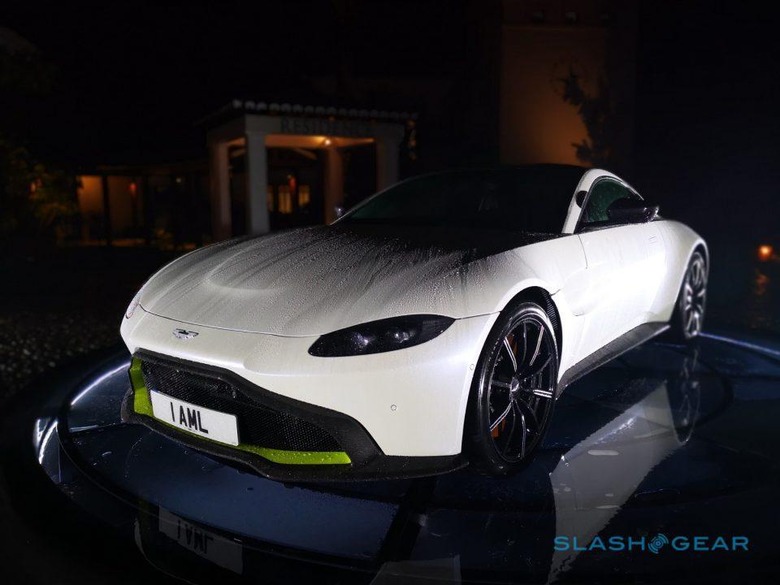
Plenty riding on the shoulders of one vehicle, then, but Aston's core message is unexpectedly short: the all-new Vantage should drive the way it looks. It's a mantra repeated over and over again, from Palmer through to Marek Reichman, Chief Creative Officer and studio head, and then down to the person tasked with executing the vision, Matt Becker, Chief Engineer.
Before I can tell you just how close driving the 2019 Vantage comes to the promise of its design, you need to understand how great a departure this car is from vehicles with the same badge before it. "The Vantage is instinctive and unadorned," Reichman explained to me. "It's stripped of armor, revealing a sense of rawness and focus."
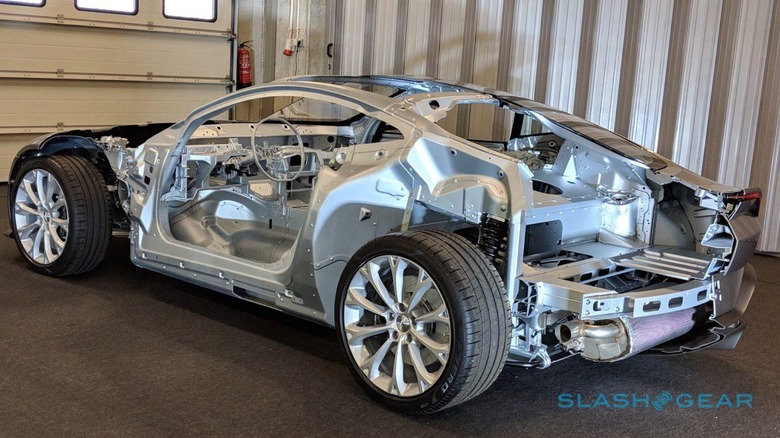
Certainly, there are hints drawn from the previous Vantage, inspirations taken from the James Bond DB10 concept, and – ever so slightly – a few key cues from the DB11 production car. The 2019 Vantage shares that model's bonded-aluminum platform, too. Yet there's also a strong message of aggression that was missing from the more gentleman-like cars that came before.
"This is not a DB11, this is our sports car," Reichmann insists, highlighting the gulf between the automaker's luxurious tourer and this angsty, track-punching scalpel. The DB11 is "a GT car, a gran touring; it's comfortable, it's elegant, it's wearing its suit. It has a presence; it has its stance, it has a traditional grille." All design elements that make up the core of what Aston Martin "stood for," Reichmann explains: elegant, GT cars.
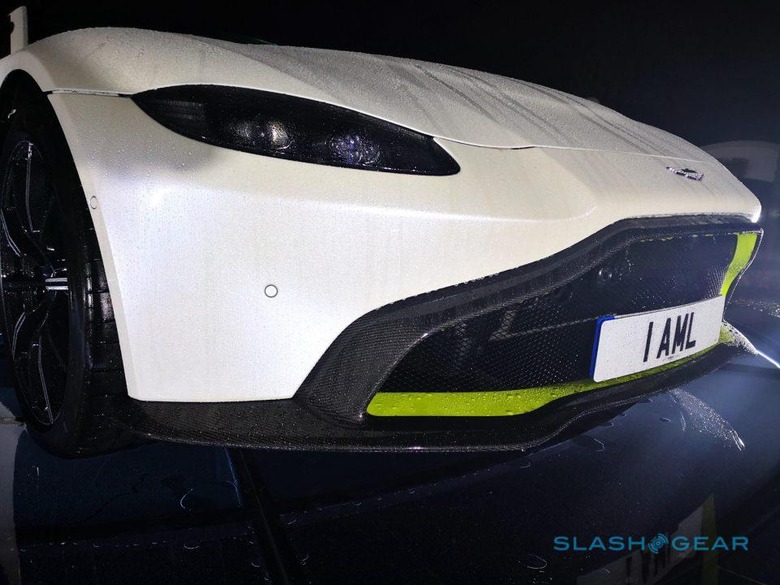
The 2019 Vantage drops into that elegance like a grenade. Gone is the traditional Aston Martin grille, replaced with a far lower nose which helps with airflow. It's designed to complement the very, very low diffuser, which funnels air back to cool not only the engine but the brakes, too. It's 11-inches shorter than a DB11 V8 and weighs considerably less, too: saving on the scales forced the designer's hand when it came to packaging the headlamps and other exterior elements, not to mention further widening the gulf between the new car and its stablemates.
The result is the fact of a predator: a shark, most likely. "Vantage is a hunter; you can see that from the face," Reichmann agrees. "It's hunting after that 911, and it's going to go past it at some point. This is the predator in our pack."
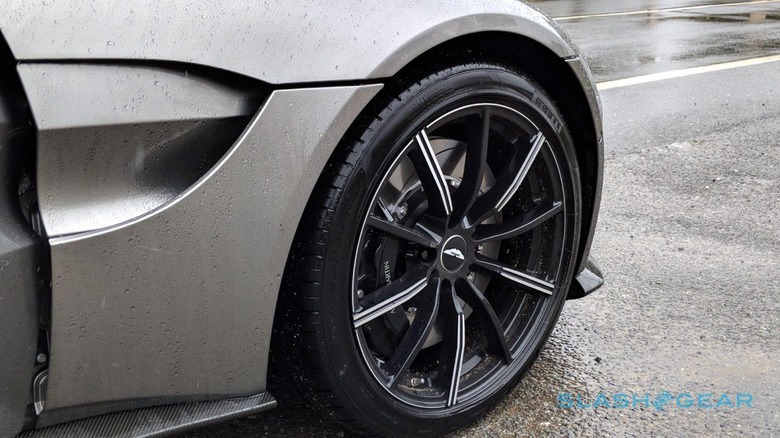
Some of the more familiar Aston Martin design elements have been lost, or evolved, as it changed Saville Row's finest for a Nomex race suit. The DB11's side strakes are gone, their function now integrated into the wheel arches. High-pressure air rushes through the gill-like channels, cutting down on body complexity or, as Reichmann says, the car's "jewelry."
With a shorter overall length to play with, the wheel arches have been pushed as far forward as possible, maximizing cabin space. Indeed, everything about the Vantage's design methodology exemplifies its golden proportion of 1/3 to 2/3. The hood to cabin space; the side window graphics; even the carbon fiber rocker panel that links the front tires to the rear tires. Sure, it's there for important aero purposes, but it also reinforces the visual language of the car.
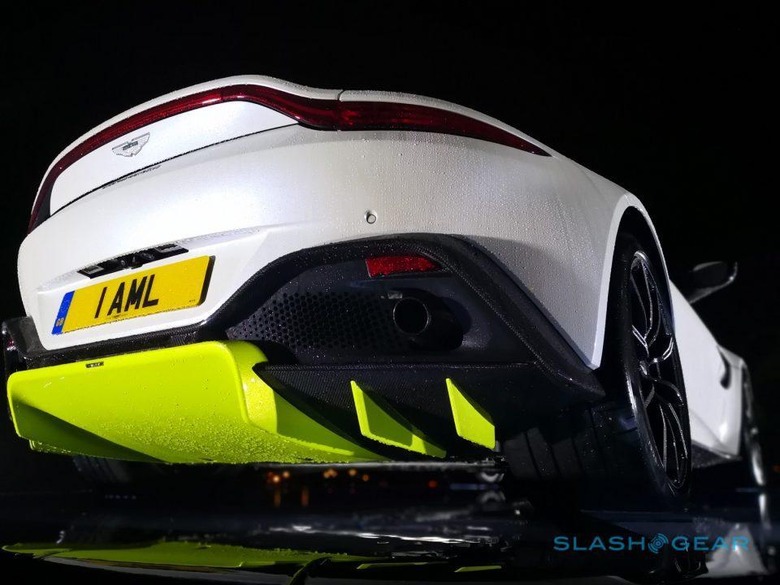
Much of what makes the new Vantage special, you don't get to see. The underside of the coupe is flat, helping with airflow back toward the diffuser. It's something we've seen in dedicated racers, but the Vantage is one of the first mass-market sports cars to bring it to public roads. The deck lid spoiler looks great, but it also contributes vital downforce.
Inside, a spirited driver's car gets a similarly spirited driving position, the seats combining the usual leather with grippy Alcantara. Sit in a DB11 and the luxury and space are clear; the Vantage feels altogether different. There's an eagerness to not only drive, but push hard.
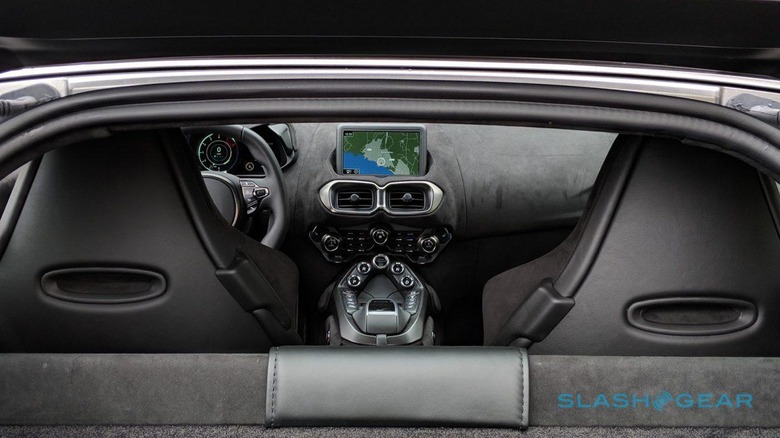
Gone is the "waterfall" center stack, opening space for the upcoming manual gear shifter. The 8-inch center display, along with the new air vents, knobs, and switches look much better to my eyes. Cleaner, and less fussy. There's an Aston Martin audio system, navigation, and WiFi, too, but make no mistake, the primary goal was wrapping something eminently functional around the driver.
With that honesty comes charm. There's an authenticity to Aston Martin's materials that I love – the glass buttons are real glass; the aluminum trim is real aluminum – and a genuine consideration for how the Vantage will deal holistically with someone eager at the wheel. I tend to push hard with my right knee against the center tunnel, for example, when I'm driving enthusiastically. Imagine the welcome surprise when I found extra padding had been added there.
Vantage vs. Portimao Algarve Race Track vs. Mother Nature
Our prayers for good weather went unheeded: Mother Nature was either on holiday or genuinely wanted me to test the Vantage in one of the worse case scenarios for a sports car. After heavy rain, both track and road courses were soaking wet. Happily, the 2019 Vantage rose to the challenge.
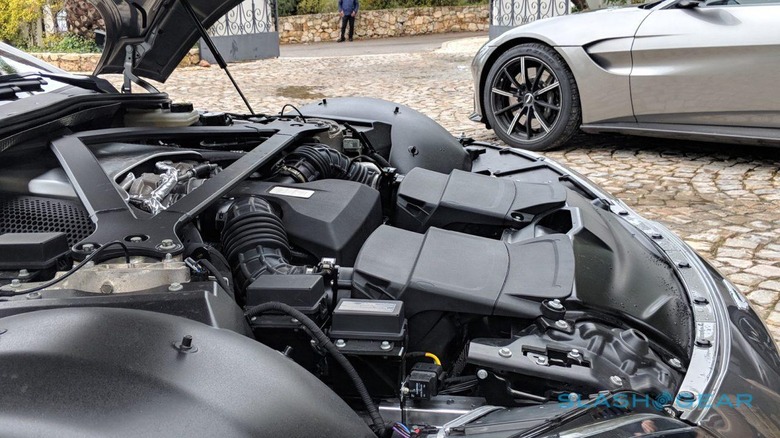
Keeping the slippery asphalt in mind, I was more than a little mindful of the highly tuned Mercedes-AMG twin-turbo 4.0-liter V8 engine which Aston Martin has used. In the new Vantage it's mated with a ZF 8-speed automatic transmission, and together they give you 503 horsepower and 505 lb-ft of torque. It really doesn't seem to matter what gear you find yourself in: lashings of torque are ready to be deployed.
The engine is pushed as far back and as low as possible, all in the name of 50/50 mass distribution between the front and rear. Combined with the low, dead center seating position, you're left in no uncertainty as to what the front and the rear of the car is doing. Equally impressive, viewing angles are just as clear, a fact you quickly come to appreciate when you'e hunting the best entry and exit through tight turns.
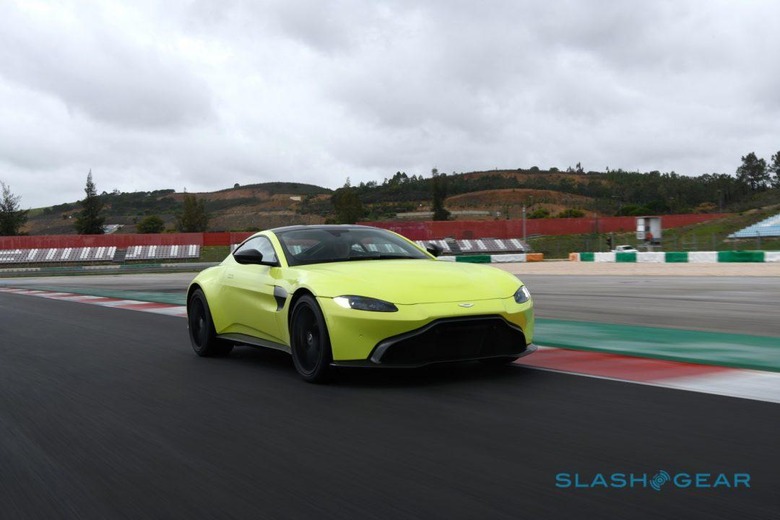
The Vantage's 195 mph top speed remained out of reach, though given a straight run I kicked it up through 150+ without the car feeling skittish or uncertain. Even in base form, you get a frankly astonishing 0-60 mph time of 3.6 seconds. Back when I drove the DB11 V8, I was particularly struck by how agile and nimble it felt compared to its V12 sibling. The Vantage takes that and multiplies it by a factor of four, easily rising to the challenge of the Porsche 911 and McLaren 570S.

Plenty of cars have superlative-levels of power, mind, but still manage to feel faintly unsatisfying to drive. Happily the Vantage's exterior is writing checks that the driving experience is more than capable of cashing. Even after a short time behind the wheel, you develop a lingering connection with the car, an amalgam of the perfect position and how communicative the engineering is.
The seven-speed manual Vantage won't arrive until sometime next year, but the eight-speed automatic is no disappointment. Aston Martin's custom software for the gearbox, combined with the electronic rear differential with torque vectoring – a first for the company – are enough to make just about anybody a superstar on the track. That became all the more pressing given just how challenging Portimao Algarve Race Track is, even in the dry.
When it's not throwing you into blind turns, the circuit is instead presenting you with blind turns combined massive elevation changes. You're not only looking left and right, but also looking right and up towards a tight climb. Get to the top, and there's an immediate, tight left-hander to reward you. Visibility is crucial, and Aston Martin has done a top-notch job.
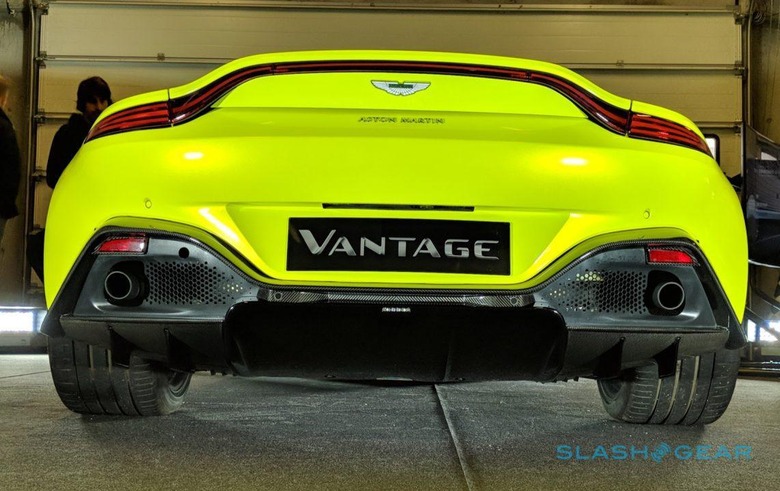
The base model Vantage, out the dealership doors with no additional modifications, comes with double A-arm suspension at the front and the DB11's multilink configuration at the rear. Aston Martin has thrown in new adaptive dampers from Bilstein, its DampTronic "Skyhook" dual-valve system with continuously-variable shocks.
There are three drive modes: Sport, Sport Plus, and Track. Switching between them changes the characteristics of the dampers, the throttle map, transmission shift points, and the electric power steering. Along the way, the Vantage shakes free of any GT confusion you may have still had. In Track mode, for example, gearshifts focus on speed and disregard everything else. "You just want the fastest shift possible," Craig Jamieson, Aston Martin's senior engineer for vehicle development told me, "you're not worried about NVH or refinement, you're just getting from one gear to the next as quick as possible."
On the road, Sport mode yields a nice balance, and – depending on your driving style – Sport Plus or Track mode is the way to go for the track. For Portimao, I found Sport Plus to be more forgiving, given the wet conditions and tightly stacked twists and turns.
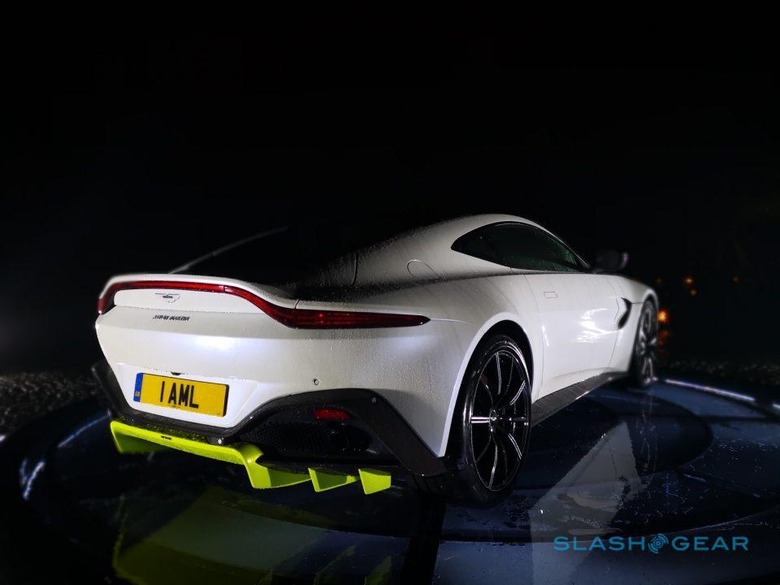
Start the Vantage up, and there's a low and deep growl punctuated by delicious crackles. The twin exhaust comes standard, though Aston Martin had outfitted the Lime Essence cars at the track with optional quad-exhausts so that their bark matched the citrus bite of the color. It sounds great, but then so did the street cars' regular twin-exhausts. Maybe just save your money and spend it on track time, fuel, and tires instead.
You're certainly encouraged to go through them, after all. There's an eagerness to the Vantage that is, happily, matched by its stability at high speed and agility at a lower pace, the rear electronic-diff worth its weight in gold as the punchy two-seater pivots and twists its way through Portimao's almost perverse combination of turns and straights.
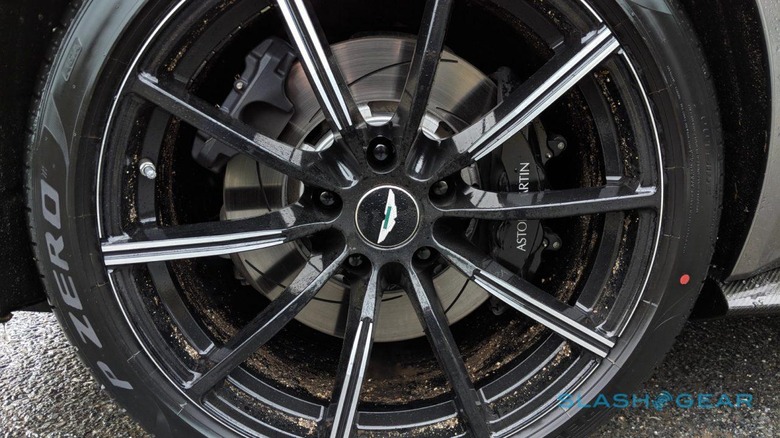
It all comes together in turn 15. It's a corner both fast and tricky, not least because it intentionally misleads you. As you hammer toward the turn you're going fast – faster than, you might initially think, is wise. A quick tap of the brake, though, and you're into an undulating high-speed right-hander. The trick is to hug the edge by locking the steering wheel while maintaining constant speed around the turn, all the time dropping in elevation toward a long straight. Third, fourth, fifth, and by the time you reach the end you should be in sixth gear and with well over 155 mph showing on the display. But no, it's still not time for braking yet.
In fact, the braking point as you hurtle toward turn 1 is downhill. Sure enough, at the end of the straight and carrying all that speed, instead of braking you gently lift of the gas. Just right, in fact, to time your braking point on the downhill slope, right before making a medium- to high-speed right-hander.
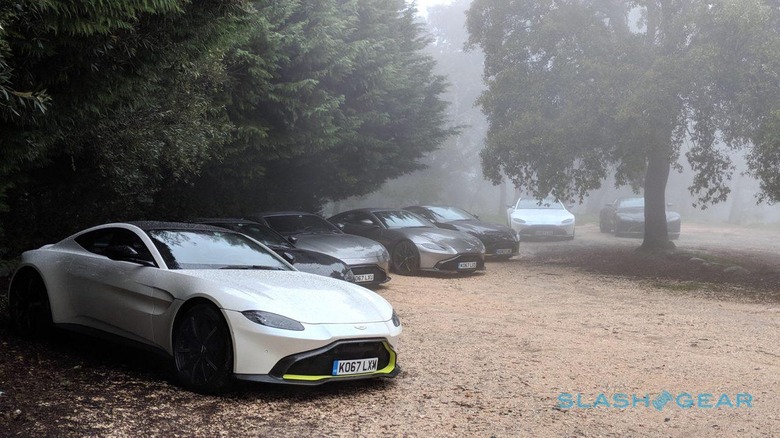
You couldn't do it if you didn't have a car you could trust. That goes doubly so when it's soaking wet. Yet never once did I feel the Vantage was out of control, its combination of power, incredible brakes, and the sticky Pirelli P Zero 255/40/20s rubber at the the front and 295/35/20s at the rear leaving me to focus on what the driver should bring to the equation: getting the timing right.
There's no time for celebration, mind. Speeding through turn 2, you're flat out into the tight hairpin at turn 3. Then turn 4, my nemesis on this track. It's all too easy to oversteer on this turn, because you're going up a blind crest. In Track mode, the Vantage and I made good friends with the run-off. Dial in Sport Plus mode, however, and the nannies kick in to help nail the turn.
So far so good, until turn 8. Again, it's an opportunity for the Vantage to shine, not to mention make you look and feel like a pro-driver. While still turning in from the last corner, you need to roll off the brakes while being sure you have enough speed coming into the apex, because you're also climbing a steep hill. Dropping down to second gear was too much, so third is best.
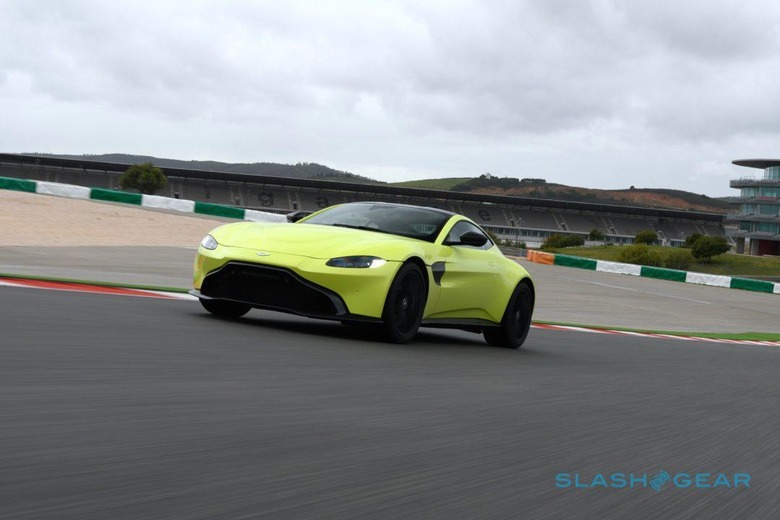
Turn 10 and 11 may be extremely technical, but they're nothing the Vantage couldn't breeze through. It sails through the speed of turn 12, too. Just in time, then, to lull you into a false sense of security – or cockiness, you take your pick – as you reach the left-hand hairpin of turn 13. Consider me well and truly freaked out the first couple of times, as the track literally disappears from view thanks to the elevation.
After a few stints, I got comfortable enough to switch over to Track mode and tear through the circuit with decent speed, while still sticking as close as I could to the racing line. It's a difficult track no doubt, but behind the wheel of the Vantage it was more exhilaration than mayhem.
Track mode still has the safety net, but allows you more room to play – even when the DSC kicks in, not uncommon on the wet surface, it's a more tempered version. As Jamieson explained to me, "you should feel a window within that yaw threshold, and play within that window. The car just comes alive; it rewards you for being smooth and fast." Again, what makes it so delicious is just how easy it is to do. When the tail end starts to kick out, you can sense it, give it a little throttle, steer into the same direction, and voila, you've nailed it.
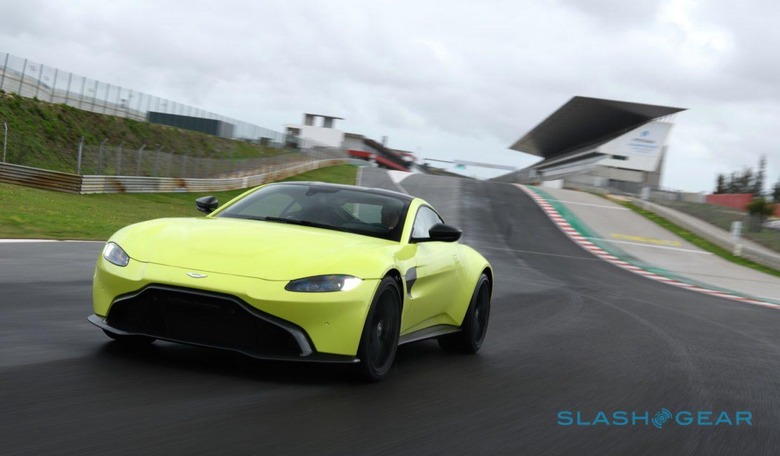
I confess, the road portion of the drive was, well, not as exciting due to heavy rain and visibility of less than a car-length courtesy of dense fog. It did give me the opportunity to get a sense of what a $150,000 Vantage feels like to drive every day, mind. Clearly it's no DB11, then again it's not supposed to be. The cabin feels tighter; the seat is snug but not uncomfortable. There's very little body roll, even in the passenger seat, and the redesigned dash puts all the switches and knobs within easy reach. Best of all, there are real, proper cupholders, not the fiddly flip-out versions Porsche insists of for the Cayman and 911.
It's fair to say that Porsche needs to keep a keen eye out for the new Vantage. With its unique looks there's no mistaking it for anything else on the market. The base model is hardly lacking in power or technology, and it's priced right at the 911 GTS' out-the-door sticker. Aston Martin isn't taking a break anytime soon, and we can expect more iterations of Vantage to come down the line. Even so, this early taste of the 2019 Vantage is more than enough on its own to convince me.
